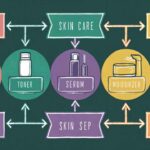In today’s fast-paced world, a robust healthcare system is more crucial than ever. It forms the backbone of a society’s well-being, ensuring access to quality medical care and promoting overall health. This article delves into the various aspects of healthcare systems, from their classifications to preventive measures, providing a comprehensive overview of their significance.

Defining Healthcare Systems
A healthcare system encompasses all organizations, institutions, and resources devoted to delivering healthcare services to meet the health needs of a target population. It includes medical professionals, hospitals, clinics, pharmacies, and public health agencies working together to promote health and treat illnesses.
Relevance and Importance
A well-functioning healthcare system is essential for several reasons:
- Promoting Public Health: Healthcare systems play a crucial role in disease prevention, health promotion, and the early detection of illnesses.
- Improving Quality of Life: Access to healthcare services enhances the quality of life by addressing health concerns promptly and effectively.
- Economic Stability: A healthy population contributes to economic productivity, as individuals can participate fully in the workforce.
- Social Cohesion: Healthcare systems foster social cohesion by ensuring equitable access to medical services, regardless of socioeconomic status.
Types and Categories
Healthcare systems can be classified into several categories based on various criteria, including funding mechanisms, delivery models, and governance structures.
Classification by Funding Mechanism
- Single-Payer Systems: In these systems, the government funds healthcare services through taxation, providing universal coverage to all residents.
- Social Health Insurance: Funding comes from mandatory contributions by employers and employees, with the government regulating and subsidizing coverage for vulnerable populations.
- Private Health Insurance: Individuals purchase private insurance plans to access healthcare services, with coverage varying based on the policy.
Classification by Delivery Model
- Primary Care: Focuses on providing basic healthcare services, including preventive care, routine check-ups, and initial diagnosis and treatment of common illnesses.
- Secondary Care: Involves specialized medical services provided by specialists upon referral from primary care physicians, such as surgery, cardiology, and oncology.
- Tertiary Care: Offers highly specialized and complex medical care, often involving advanced procedures and treatments, such as organ transplants and intensive care.
Classification by Governance Structure
- Centralized Systems: The government plays a dominant role in healthcare decision-making, funding, and service provision.
- Decentralized Systems: Decision-making authority is distributed among various regional or local entities, allowing for greater flexibility and customization of healthcare services.
- Mixed Systems: Combine elements of both centralized and decentralized governance, aiming to balance efficiency and responsiveness to local needs.
Symptoms and Signs
Recognizing symptoms and signs of illnesses is crucial for early intervention and effective treatment. While symptoms vary depending on the condition, some common signs indicate underlying health issues.
Common Symptoms
- Fever: Elevated body temperature often indicates an infection or inflammatory response.
- Fatigue: Persistent tiredness or exhaustion may result from various factors, including sleep disturbances, stress, or underlying medical conditions.
- Pain: Discomfort or pain in specific areas of the body can signal injury, inflammation, or disease.
- Shortness of Breath: Difficulty breathing or shortness of breath may indicate respiratory problems, cardiovascular issues, or anxiety.
- Unexplained Weight Loss: Sudden or unexplained weight loss without dietary changes or increased physical activity may be a symptom of underlying health conditions, such as cancer or thyroid disorders.
Uncommon Symptoms
- Paresthesia: Tingling, numbness, or burning sensations in the extremities may indicate nerve damage or neurological disorders.
- Visual Disturbances: Changes in vision, such as blurriness, double vision, or vision loss, warrant prompt medical evaluation for eye conditions or neurological issues.
- Memory Loss: Forgetfulness or cognitive decline beyond typical age-related changes may signal underlying conditions like Alzheimer’s disease or vascular dementia.
- Muscle Weakness: Gradual or sudden weakness in specific muscle groups may indicate neuromuscular disorders, autoimmune diseases, or electrolyte imbalances.
Causes and Risk Factors
Understanding the underlying causes and risk factors associated with health conditions is essential for prevention and targeted interventions.
Biological Factors
- Genetics: Inherited genetic mutations or predispositions can increase the risk of certain diseases, such as hereditary cancers or genetic disorders.
- Age: Advancing age is a significant risk factor for various health conditions, including cardiovascular diseases, osteoarthritis, and neurodegenerative disorders.
- Gender: Biological differences between males and females can influence susceptibility to certain diseases, such as hormonal conditions or reproductive health issues.
Environmental Factors
- Pollution: Exposure to air, water, or soil pollutants can contribute to respiratory diseases, cardiovascular disorders, and cancer.
- Occupational Hazards: Certain occupations pose risks to workers’ health due to exposure to harmful substances, repetitive motions, or physical hazards.
- Climate Change: Shifts in climate patterns may impact disease prevalence, vector-borne illnesses, and natural disasters, affecting population health globally.
Lifestyle Factors
- Dietary Habits: Poor dietary choices, such as excessive consumption of processed foods, sugary beverages, or high-fat meals, contribute to obesity, diabetes, and cardiovascular diseases.
- Physical Activity: Sedentary lifestyles and lack of regular exercise increase the risk of obesity, metabolic disorders, and musculoskeletal problems.
- Substance Abuse: Tobacco use, excessive alcohol consumption, and illicit drug use have detrimental effects on overall health, leading to addiction, organ damage, and mental health disorders.
Diagnosis and Tests
Accurate diagnosis relies on a combination of clinical assessment, medical history, and diagnostic tests to identify underlying health conditions.
Common Diagnostic Tools
- Physical Examination: Healthcare providers assess patients’ overall health, vital signs, and specific symptoms through observation, palpation, and auscultation.
- Laboratory Tests: Blood tests, urine analysis, and other laboratory investigations help evaluate organ function, detect infections, and assess biochemical imbalances.
- Imaging Studies: X-rays, CT scans, MRIs, and ultrasound examinations provide detailed images of internal structures, aiding in the diagnosis of injuries, tumors, or anatomical abnormalities.
- Biopsy: Tissue sampling and histological analysis enable the detection of cancerous or abnormal cells, guiding treatment decisions and prognosis.
Specialized Tests
- Electrocardiogram (ECG): Records the heart’s electrical activity to diagnose cardiac arrhythmias, ischemic heart disease, and conduction abnormalities.
- Endoscopy: Visualizes internal organs or structures using a flexible tube equipped with a camera, allowing for direct inspection and biopsy collection.
- Genetic Testing: Analyzes DNA sequences to identify genetic mutations or predispositions associated with hereditary diseases, cancer susceptibility, or pharmacogenomics.
Treatment Options
Healthcare systems offer a range of treatment options tailored to individual needs, aiming to alleviate symptoms, manage chronic conditions, and promote recovery.

Medical Treatments
- Medications: Prescription drugs, including antibiotics, analgesics, and immunosuppressants, target specific symptoms or underlying causes of illnesses.
- Surgery: Invasive procedures may be necessary to repair injuries, remove tumors, or restore organ function, often requiring anesthesia and post-operative care.
- Chemotherapy: Anti-cancer drugs destroy cancer cells or inhibit their growth, administered orally, intravenously, or via localized injections.
- Physical Therapy: Rehabilitation programs focus on restoring mobility, strength, and function through exercises, manual therapy, and assistive devices.
- Radiation Therapy: High-energy radiation beams target cancerous cells, shrinking tumors and preventing their proliferation, often used in combination with other treatments.
Therapies and Interventions
- Cognitive-Behavioral Therapy (CBT): Psychotherapy techniques address maladaptive thoughts and behaviors, promoting mental health and coping skills development.
- Occupational Therapy: Specialized interventions help individuals regain independence in daily activities, such as self-care, work, and leisure pursuits.
- Speech Therapy: Speech-language pathologists assist patients with communication disorders, swallowing difficulties, and cognitive-linguistic impairments.
- Alternative Medicine: Complementary therapies like acupuncture, herbal medicine, and chiropractic care offer non-conventional approaches to health and wellness.
- Palliative Care: Multidisciplinary support focuses on relieving symptoms, improving quality of life, and addressing psychosocial and spiritual needs in patients with life-limiting illnesses.
Lifestyle Adjustments
- Dietary Modifications: Nutrition counseling and dietary planning promote healthy eating habits, weight management, and disease prevention.
- Physical Activity Programs: Exercise regimens tailored to individual abilities and preferences enhance cardiovascular fitness, muscle strength, and overall well-being.
- Stress Management Techniques: Mindfulness meditation, relaxation exercises, and stress-reduction strategies alleviate psychological distress and improve resilience.
- Smoking Cessation: Behavioral counseling, nicotine replacement therapy, and medication assistance support individuals in quitting smoking and reducing tobacco-related health risks.
- Sleep Hygiene Practices: Sleep assessments and behavioral interventions address sleep disorders, insomnia, and sleep-related breathing problems, optimizing sleep quality and quantity.
Preventive Measures
Proactive health interventions aim to reduce the incidence of diseases, promote healthy behaviors, and empower individuals to take charge of their well-being.
Vaccination
- Routine Immunizations: Vaccines protect against infectious diseases, including measles, influenza, polio, and hepatitis, recommended for children and adults based on age and risk factors.
- Travel Vaccinations: Pre-travel consultations identify destination-specific health risks and recommend vaccinations to prevent diseases like yellow fever, typhoid, and rabies.
Screening Programs
- Cancer Screening: Regular screenings for breast, cervical, colorectal, and prostate cancers detect early-stage tumors when treatment is most effective, improving survival rates.
- Cardiovascular Screening: Blood pressure measurements, cholesterol tests, and electrocardiograms assess cardiovascular risk factors and guide preventive interventions.
Health Education
- Nutritional Counseling: Dietitians educate individuals on healthy eating patterns, portion control, and nutrient-rich food choices to prevent obesity, diabetes, and heart disease.
- Physical Activity Promotion: Exercise physiologists design personalized fitness plans and educate clients on the benefits of regular physical activity for overall health and well-being.
Lifestyle Modification Programs
- Weight Management: Behavioral interventions, dietary counseling, and support groups assist individuals in achieving and maintaining a healthy weight, reducing the risk of obesity-related conditions.
- Smoking Prevention: Tobacco cessation programs target adolescents and young adults, emphasizing the dangers of smoking, nicotine addiction, and secondhand smoke exposure.
Personal Stories or Case Studies
Real-life narratives illustrate the impact of healthcare systems on individuals’ lives, highlighting challenges, triumphs, and lessons learned.
Patient Perspectives
- Overcoming Adversity: Sarah’s journey battling cancer underscores the importance of early detection, comprehensive treatment, and unwavering support from healthcare providers and loved ones.
- Navigating Chronic Illness: Mark shares his experiences managing diabetes, highlighting the critical role of self-care, medication adherence, and regular monitoring in maintaining optimal health.
Caregiver Accounts
- Caring for Aging Parents: Jane reflects on her role as a caregiver for her elderly parents, emphasizing the importance of compassionate care, effective communication, and community resources.
- Supporting Children with Special Needs: David shares his family’s journey raising a child with autism, advocating for inclusive education, therapeutic interventions, and social support networks.
Expert Insights
Healthcare professionals offer valuable perspectives on healthcare delivery, patient care, and emerging trends in the field.
Physician Perspectives
- Dr. Emily Smith, MD: “Early intervention and preventive care are fundamental in reducing the burden of chronic diseases and improving long-term health outcomes.”
- Dr. Michael Johnson, Cardiologist: “Advancements in cardiac imaging technology have revolutionized the diagnosis and management of heart disease, allowing for personalized treatment approaches tailored to individual patient needs.”
Public Health Experts
- Dr. Anna Garcia, MPH: “Population-based interventions, such as vaccination campaigns and health education initiatives, are instrumental in addressing public health challenges and promoting community well-being.”
- Professor James Lee, Epidemiologist: “Surveillance systems and data analytics play a critical role in tracking disease trends, identifying outbreaks, and informing evidence-based public health policies.”
Conclusion
In conclusion, a robust healthcare system is vital for promoting population health, delivering quality care, and addressing the diverse needs of individuals and communities. By focusing on preventive measures, early detection, and comprehensive treatment options, healthcare systems can improve outcomes, enhance well-being, and foster a healthier future for all.











